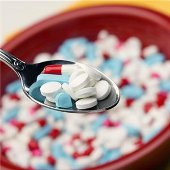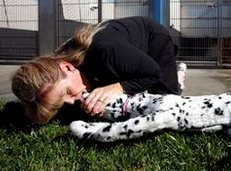If an animal is displaying signs of rapid, repetitive movement of a limb or any set of muscles, it may be going through an epileptic fit or a convulsion. Convulsions are movements that result from abnormally synchronous and repetitive firing patterns in the nerve cells of the brain, causing repetitive and spastic movements of certain body parts.
 Convulsions can be caused by an epileptic condition, see Epilepsy, or by some other trigger usually related to a chemical or medicinal interaction. This can happen when exposed to a new drug, when an ongoing medication is suddenly terminated, or when something toxic has gotten into the pet’s system. Convulsions can also be caused by excessive fluid intake, overheating, and trauma. Thrashing and frothing at the mouth are additional symptoms.
Convulsions can be caused by an epileptic condition, see Epilepsy, or by some other trigger usually related to a chemical or medicinal interaction. This can happen when exposed to a new drug, when an ongoing medication is suddenly terminated, or when something toxic has gotten into the pet’s system. Convulsions can also be caused by excessive fluid intake, overheating, and trauma. Thrashing and frothing at the mouth are additional symptoms.
When a convulsion occurs:
 Remain calm. This is extremely important. You may prolong the fit if you scream or get upset. Say positive, calming words such as “everything’s okay.”
Remain calm. This is extremely important. You may prolong the fit if you scream or get upset. Say positive, calming words such as “everything’s okay.”- If breathing or heart stops, use the techniques described in the Artificial Resuscitation section.
- See a veterinarian. The animal may be poisoned or have an epileptic problem.
If the convulsion is sudden and related to trauma, as opposed to an epileptic fit, give Aconitum 30c for shock. If convulsions continue for five minutes, give Belladonna 30c. You may also want to give Dr. Bach’s rescue formula. If you think the animal was poisoned, see Poisoning.